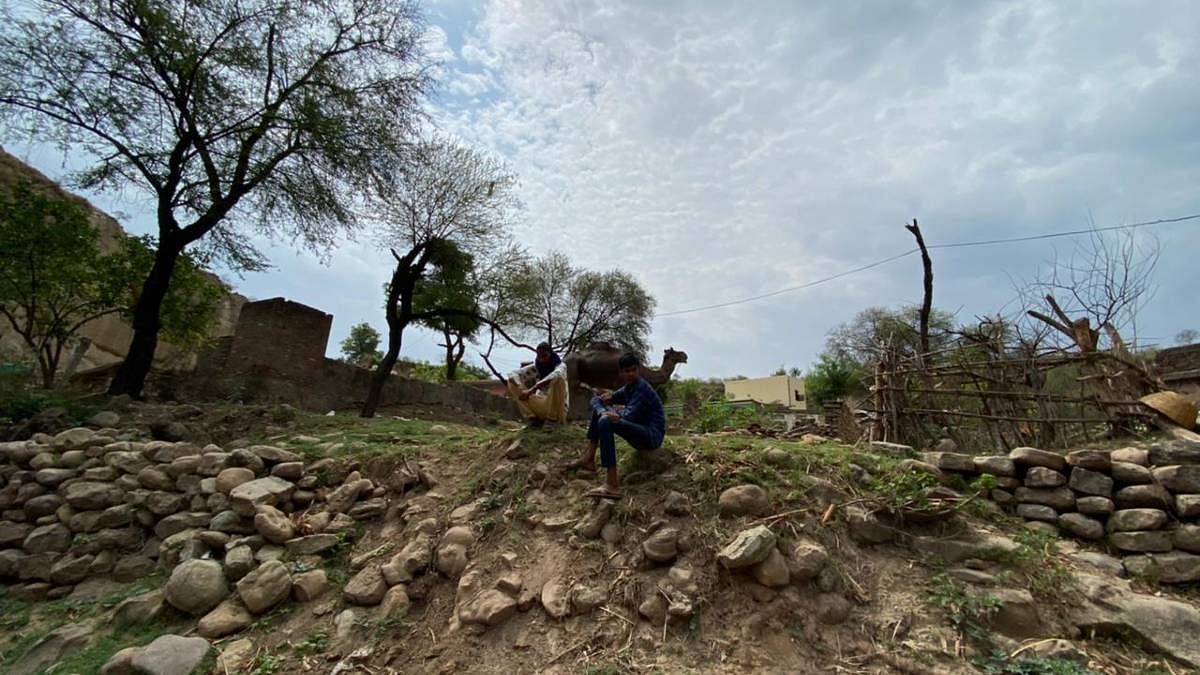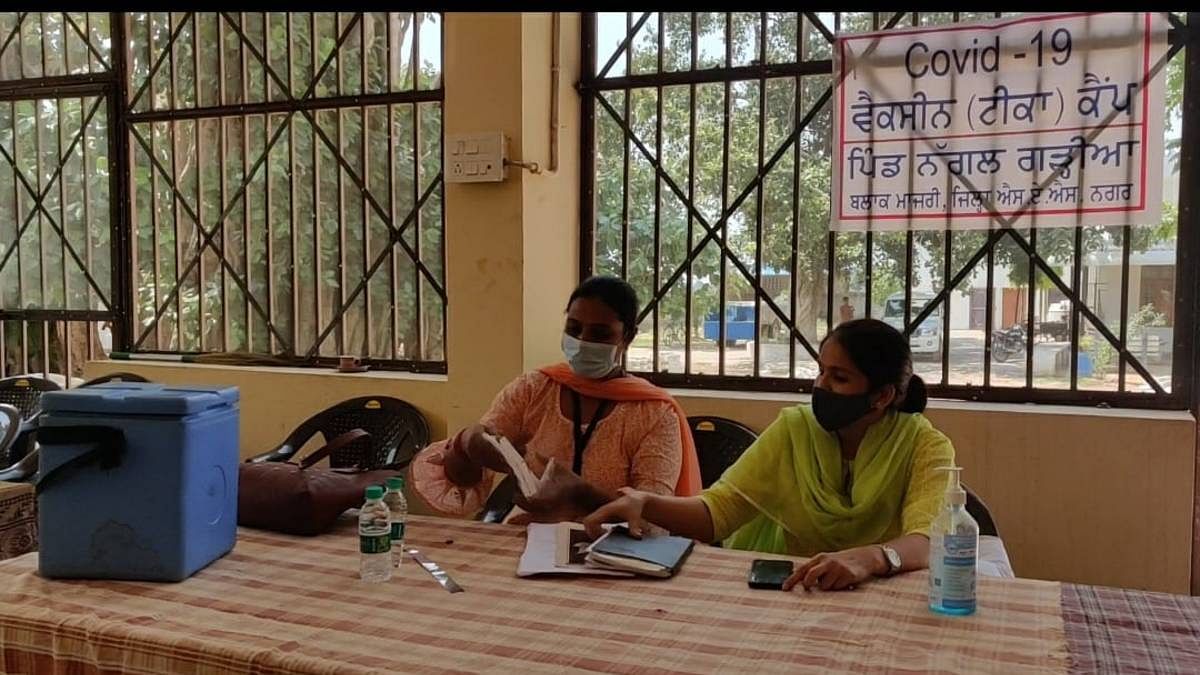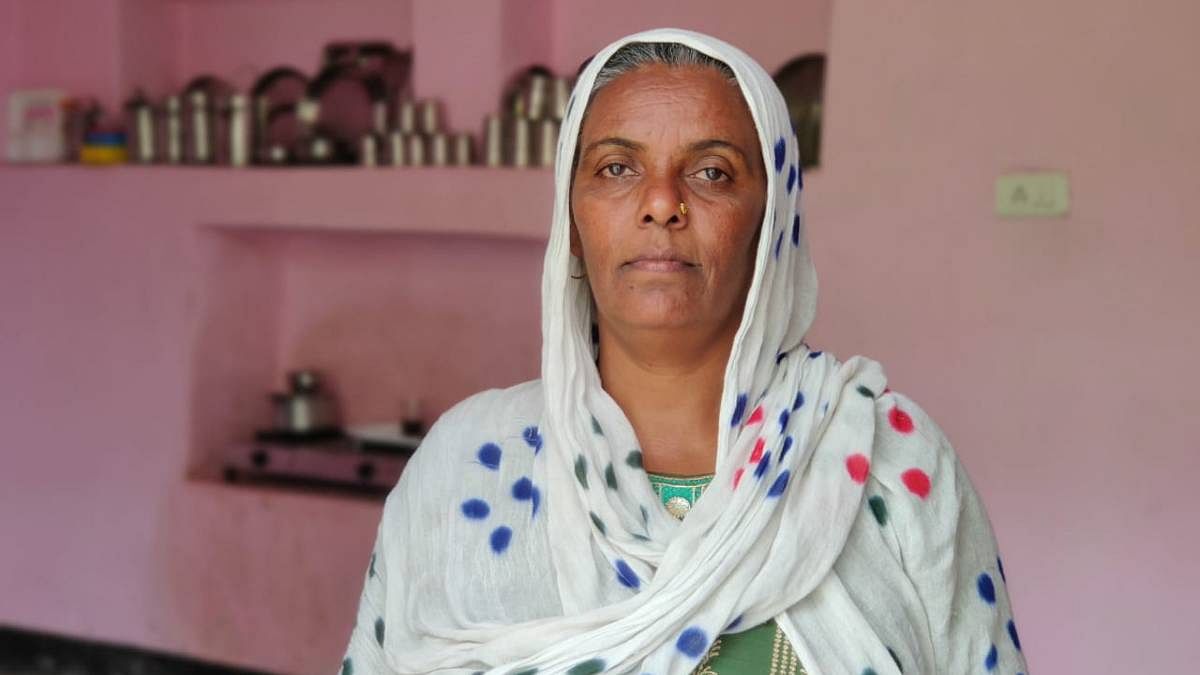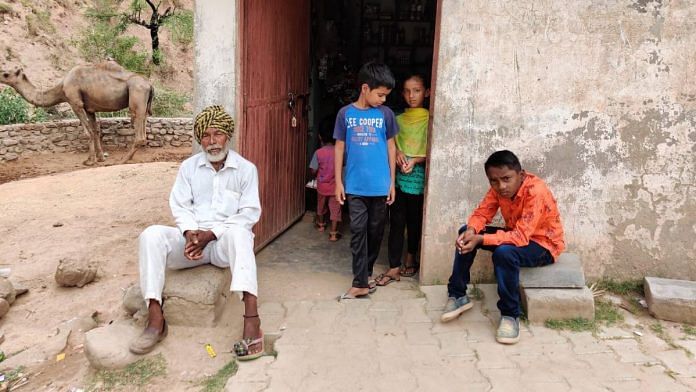Mohali: Trudging through the scenic yet bumpy route of mud-tracks uphill, dotted with pond size puddles for kilometres together, one reaches Masol, the remotest village in Mohali on the Punjab-Himachal border.
Here the phones do not catch signals, there is no internet and only five to six homes have access to a television or a smartphone. There are only 76 households—all engaged in either labour work or small-time farming. But from an 8-year-old child to an 80-year-old woman, everyone here is aware of the ‘Bhayankar bimri’ and wants to take the ‘jaan bachane wala tika’— the Covid vaccination, to keep the virus at bay.

A view of Masol village | Ananya Bhardwaj | ThePrintThe minute ThePrint team entered the village, a woman aged in her forties ran up to the car and asked, “Tusi teeka lagan aye ho? Menu apne admi nu lawana hai, gurudware announcement karwa daiye? (Are you here to vaccinate? I have to get one for my husband, should I get an announcement done at the gurudwara)”.
When informed otherwise, she looked disappointed. “Menu lagaya teeka laan wale aye hai (I thought it was the team that comes to put injections),” she said again. Her husband had been away from the village, when the last camp was set up and so missed being vacinated.
In Masol, which has a population of 400, everyone aged 45 and above have received the first vaccine dose (then why has that woman’s husband not been vaccinated?). The others are eagerly waiting for the next camp.
The village was “adopted” by six Mohali administration officials, who sponsored the vaccine doses for everyone. By doing this, officials say, they got to “contribute their bit” and make sure that their money was being put to good use. Since the scheme was appreciated by many, the administration has now put all 341 villages in the district up for adoption. Thirteen villages have since been adopted for vaccinations by private individuals, businessmen, philanthropists, and companies under their corporate social responsibility (CSR) scheme.
Speaking to ThePrint, Mohali District Commissioner Girish Dayalan said that their aim was to vaccinate the maximum number of people at the earliest and the focus was now on the rural population.
“Vaccination is the only sure way of ensuring that people do not get severely ill. Out of the 960 deaths in Mohali, only one has been of a person who had been vaccinated. So, we have put all our resources in vaccinating our population and are doing fairly well,” he said.
To ensure vaccination for the maximum number of people possible, the district did not always stick to the age group divisions stipulated by the Centre for vaccination eligibility, said sources in the Mohali administration.
According to data accessed by ThePrint from the state government, in Punjab, Mohali – with a population of 10 lakh – is the only district that has vaccinated over 51 per cent of its population. The next is Pathankot, which has vaccinated 28.43 per cent of its population and the worst performer is Sangrur, which has vaccinated only 10.66 per cent of its population.
Meanwhile, while Masol is not the only village in Mohali where people are eager to be vaccinated. Residents of Nangal Ghariyan and Isapur village are also queuing up for vaccinations, though each of these places have their own reasons for seeking safeguard from possible Covid infection.
Also read: Why Punjab migrant farm labourers don’t want to leave despite Covid surge & lockdown fears
Village adoption and maximising vaccinations
“The idea of village adoption came up in a discussion, when funds were being sought by the state from companies and philanthropist, for vaccination under CSR,” said Dayalan, adding, “but we thought that people could pick up villages where vaccinations for those in the 45 plus age category has been done by government. They can sponsor vaccination for the rest of the village population. It would make them feel that their money has been put to good use.”
So the district administration first started by adopting Masol.
“It gave us a greater sense of satisfaction knowing that the money we are putting in, is going to save lives. Since then many people have come forward, saying that they want to sponsor a village and we have already got sponsorship for 13 villages,” he said.
When the individual or a company picks a village they want to sponsor, they are given details of the population of the village. Based on the population and doses required for that particular village, money is donated in the CSR account. The money is then used to purchase doses for that particular village.
However, according to sources in Mohali administration, in order to ensure that everyone who is willing to be vaccinated receives the dose, the district administration did not strictly stick to the policy of vaccinating only those in the eligible age categories.

In fact, the state government even asked the Mohali administration how 30 per cent of its population could be vaccinated under the category of “frontline workers”.
“For us every person stepping out to work is a frontline worker. The age does not matter. We even got in trouble for showing so many people were vaccinated under the ‘frontline category’,” said the source, adding, “Why should a person who is in his thirties and is stepping out every day to work, not get vaccination because it is for someone above 60 years of age who is not even stepping out? If someone comes to us for the shots and we have it in stock, we do not send that person away.”
Also read: Punjab govt selling Covid vaccines to private hospitals for profit, alleges Sukhbir Badal
Getting into brawls for vaccine doses
Across rural Mohali, people are now willing to be vaccinated, though their reasons for taking the shots vary.
For Masol, the closest rural medical practitioner (RMP) doctor is almost a 40 minutes walk away and the closest government hospital is at a distance of 20 kilometers. So, no one wants to fall ill and risk not being able to access medical help.
“If we fall sick, it means we die. So it is important to get vaccinated. The local doctor here is 4 km away which is a 40 minutes’ walk. The hospital can only be reached by bike, which only a few people here have. So, even if we do not know much about corona, it is important we get vaccinated,” said Nimo Kaur, sarpanch of Masol village.

In Nangal Ghariyan village on the other hand, the farmers here are going in for vaccinations because they do not want to fall sick and weaken the ongoing agitation against the three farm laws.
“Initially we were hesitant, as we were told that many people died after taking the injection. But now, we realise it is important to keep the virus away, said Swarn Singh, sarpanch of the village. He added: “Moreover, people from every household here are going to Singhu borders on a rotational basis, and the ones vaccinated are tension free. We want everyone to take the jab and be safe, so that our movement does not weaken. It is also our responsibility that we do not become carriers of the virus.”
Meanwhile, Kesar Singh, former sarpanch of Isapur village in Dera Bassi municipal committee – part of Mohali district – said the village has been adopted an NGO working for Covid relief. Here, there is a waiting list of those who are willing to be vaccinated and each day the list keeps growing, he said.
“I already have 279 names on the list and it is only keeps growing. Each time there is a vaccination camp, people turn up in huge numbers and last time, there was even a scuffle here among those awaiting vaccination. Now, we have started giving them slips, based on their number on the waiting list to streamline the process,” he said.
The villagers, said Singh, got scared after many started dying in the second wave. Dera Bassi, which has 62 villages under it witnessed over 450 deaths in the past one month, as compared to 150 deaths during the first wave of the pandemic last year.
“People now want to take the jab, but the government is not sending enough doses. Whenever there is a camp, the doses get over in just a few hours. The government should make sure that sufficient amount is procured,” Ranjit Singh Reddy, Dera Bassi Pradhan, told ThePrint.
Commenting on the shortage of vaccines, DC Dayalan said that the supply of doses is not matching the requirement.
“Earlier, we had vaccines but people were hesitant. Now the demand has gone up, but the supply is intermittent. On a good day, the supply gets over in a day. We are working on some solutions. There is not exactly a shortage, but the doses we have are not as many as we would like,” he said.
(Edited by Poulomi Banerjee)
Also read: Punjab govt orders recall of vaccines sold to private hospitals






